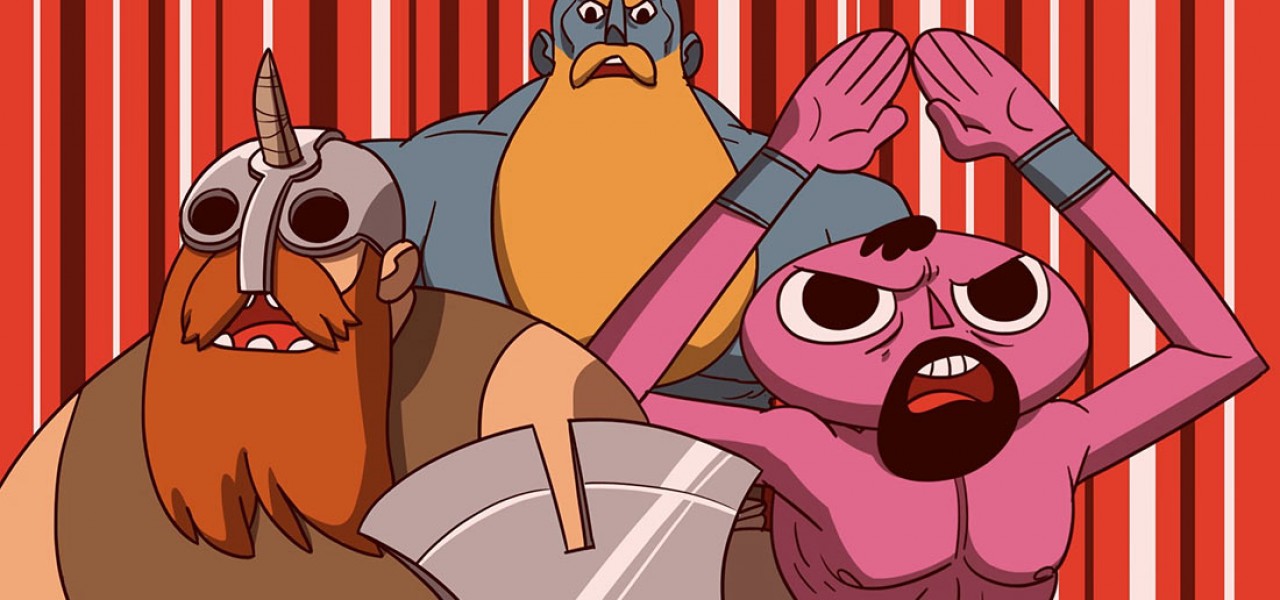

Can You Make A Career Out of Internet Animation? The Pegbarians Are Definitely Trying
It can be tough to earn a living through YouTube.
But that is what Dutch animators Thijs Koole, Florian Walraven and Martijn Calkhoven — also known as Pegbarians — are doing. In late 2012, the three classmates started their Pegbarians channel as part of a school project. They wanted to find a way to pay the rent by working for themselves, rather than for commercial clients or big studios.
Following their summer 2014 graduation, Pegbarians have since made a career out of internet animation, balancing commissioned and original work with (or around) YouTube’s monetization system. They managed it by building a solid fan base through sketches based on popular culture staples like Adventure Time and Super Mario, as well as series based on stories proposed by their audience and Let’s Play animations. As of this writing, Pegbarians’ channel boasts 200,000 subscribers and is part of Channel Frederator’s network.
“In television and cinema, all involved have to invest big, with 13 or 26 episodes at the same time, before there’s any idea of how successful it will be,” Calkhoven told Cartoon Brew. “On YouTube, you make and upload the first episode, then maybe a second, then maybe a third. If you don’t feel like continuing, you simply quit and start another series. If a video we make fails, it’s not that dramatic, because it cost us barely one week of time.”
In early 2013, Pegbarians took the first step towards making a profitable channel by getting famous, also known as “leeching off of others’ success,” explained Koole, laughing. It worked: Pegbarians’ first video, Pokeball Z, earned them 12,000 channel subscriptions in a couple of days. Today, it boasts over 4.5 million views — but it didn’t make the animators much money.
“We used audio from Freeplay Music — which turned out not to be free use music — so we had to stop monetizing the video,” said Koole. “That was a tough lesson to learn.”
Today, Pegbarians are doing OK financially. Walraven and Calkhoven are making online animation full-time. Koole is doing the same part-time —- but not thanks to the monetization of Pegbarians’ videos.
“It’s tough,” explained Calkhoven. “Pegbarians makes us enough to pay our monthly Internet bill, although the channel is still worth it. It brought us many commissions from other channels, which do make us enough money to live on. Those channels happened to like what we did with Pegbarians, and asked us to create stuff for them too. I guess you could say our channel is our portfolio.”
Eighty percent of the work Pegbarians create online is for YouTube channels like SeaNanners and Vanoss Gaming. In the beginning, channels paid them a set amount per video, but now they split the revenue 50/50 a month after the video has been uploaded.
This means the channel gets content they didn’t have to produce; they press “upload” without risk of losing money. For Pegbarians, it means more income, because their videos always do well on other channels. They’ve found that animation content generally gets more than double the amount of views than live-action content, because people watch animation several times.
However, animation isn’t the ideal art form for the world of YouTube. In 2014, Ross O’Donovan criticized YouTube’s new monetization scheme for its preferential treatment towards live-action creators. While Pegbarians understood that a new algorithm was necessary, because people were exploiting the system, they also saw it as a short-time solution.
“Obviously, this system gives game players the most benefits,” said Calkhoven. “I’m quite sure YouTube doesn’t mind making even more money off of Pewdiepie through the new algorithm. Some live-action YouTube friends and I sometimes compare our clicks-per-minute, and they get like 10 times more. It’s no wonder animators get discouraged by this system.”
Unfortunately, moving onto other platforms isn’t a viable option. And while Pegbarians are secretly hoping a serious competitor to YouTube arises, they know it’s probably not going to happen. So they’re trying to beat the scheme by creating low-key, longer-form content.
“We did a live Q&A that worked very well,” explained Walraven. “Basically, it’s us talking for about 15 minutes, illustrated with just a few slides that we repeat. It’s a time-effective method, and works quite well for the viewers. I was surprised to find that people are not only interested in our animation, but in us as well. They even want to hear about our hobbies.”
In the future, Pegbarians would like their channel to return to its initial concept, a series based on the their characters, Red, Tinits, and Knut. But when they have to choose between making something for themselves, or a series for someone else’s channel, which pays the rent, it’s an obvious choice.
The Pegbarians believe the future of their channel is going to come down to crowdfunding. But they also believe that the problem with Patreon and other crowdfunding platforms is that they’ve become too popular.
“People have been using it too much for things like, ‘I have to go to the grocery store!’ or small amounts like $400,” Calkhoven explained. “Come on, just do one commission and you’re done.”
Despite Pegbarians’ unclear future, Koole, Walraven, and Calkhoven want to continue creating animation for their YouTube channel. “The greatest thing about it is that we can make what we want to make,” concluded Walraven.
“We can have this really weird idea and say, ‘Let’s make it!'” agreed Koole. “On the Internet, your audience creates itself around you. Pegbarians’ main audience is nerdy guys, aged 13-17, and that’s totally fine. YouTube doesn’t pay much, but we get to make butt jokes.”

